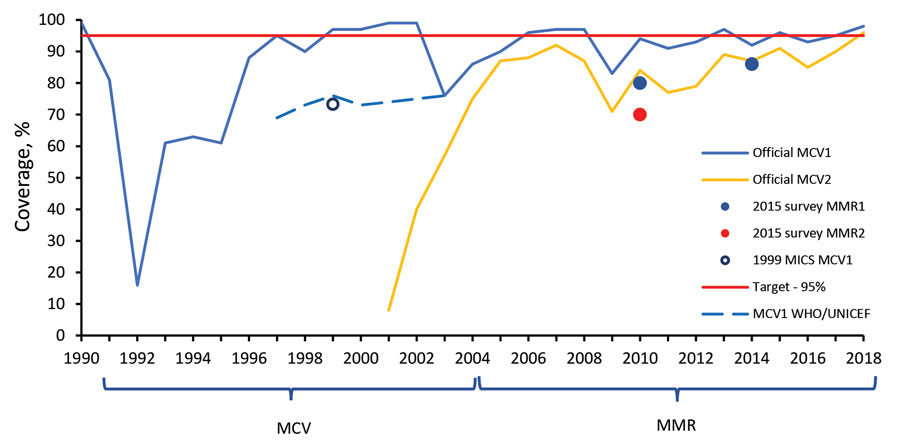Volume 26, Number 11—November 2020
Synopsis
Challenges to Achieving Measles Elimination, Georgia, 2013–2018
Figure 11

Figure 11. Coverage with the first and the second doses of measles-mumps-rubella vaccine, according to an immunization coverage survey, Georgia, 2015–2016. A) 2013 birth cohort. B). 2009 birth cohort. MMR, measles-mumps-rubella vaccine; MMR1, first dose of MMR; MMR2, second dose of MMR.
Page created: September 14, 2020
Page updated: October 17, 2020
Page reviewed: October 17, 2020
The conclusions, findings, and opinions expressed by authors contributing to this journal do not necessarily reflect the official position of the U.S. Department of Health and Human Services, the Public Health Service, the Centers for Disease Control and Prevention, or the authors' affiliated institutions. Use of trade names is for identification only and does not imply endorsement by any of the groups named above.